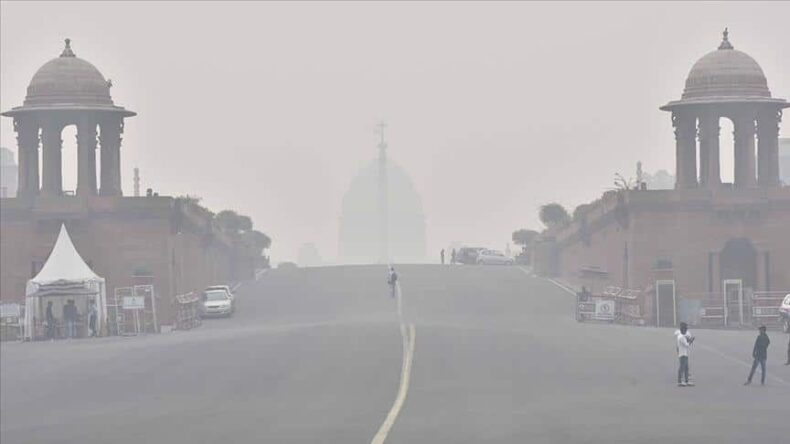The air pollution index of 2022 has placed India in the 8th spot of worst air quality. The annual report is released by Swiss air technology called IQ Air.
India has improved in 4 steps and the most polluted countries include Chad, Iraq, Pakistan, Bahrain and Bangladesh in 2022.

The annual average PM2.5 level as per WHO guidelines should be 5ug\m3 or less.
Indian annual Pm2.5 level in 2022 was 53.3 Ug\m3.
This is 10 times more than the safe limit and slightly lower than the 2021 average of 58.1.
Bhiwadi in Rajasthan is the most polluted city in the country.
60% of the Indian cities in the report experienced 7 times higher annual PM2.5 levels as per the who guideline.
Only 6 countries in the report, Australia, Estonia, Finland, Grenade, Iceland, and w Zealand met the annual pm2.5 guideline value.
Most of Asia has been placed at the lower ranks, wherein the guideline has been exceeded.
A major source of air pollution in the country is sourced all year from the burning of diesel, petrol, gas, coal, biomass waste and resuspended dust.
According to the data released in 2016, the air that the Indian people breathe in is 10 times more than the safe limit and 13 of the world’s most polluted cities are in India.
The breakup of sources of air pollution:
51%==Industrial pollution.
27%=Vehicles.
17%=Crop burning.
5%=Other sources.
It leads to the premature death of around 2 million people every year.

In rural areas, biomass burning for cooking and keeping warm is the main pollutant. Cooking fuel in rural areas is a wet mix of dried grass, fuelwood, leaves, and dung. Around 100 million households in the country use stoves called chulhas each day because of poor rural highways and energy infrastructure.
300000 to 400000 people die due to indoor air pollution releasing carbon monoxide higher than the release by LPG.
Air pollution is the main cause of the formation of Asian brown clouds which is delaying the start of the Monsoon.
The burning of biomass and firewood will not stop until electricity and clean burning fuel are used.
The 2nd cause is greenhouse emissions. India is the 3rd largest greenhouse gas producer after China and the USA.
The Indians have 30% weaker lung functions compared to their European counterparts.
The air pollution (Prevention and control of pollution) act 1981 was passed, but failed due to weak policy implementation.
The other causes of pollution include domestic pollution and efficient drainage systems.
Traffic congestion and fuel adulteration are the other causes.
Various steps are being taken by the central govt. Monitoring stations for pollution have been set up in 132 cities.
In Delhi, diesel cars have gone through 10 years of driving and are prohibited.
To reduce the fuel consumption of vehicles, the east and west express highways have been built in the national capital region.
There is a need to replace the old polluting technology with modern fuel-efficient technology.
In this context, the central govt has started the National control air programme.
According to the 5th finance commission, 4400 crores have been given to prevent air pollution with an additional outlay of 12139 crores to improve the air quality between 2021-2026.
The central, state and people need to work hand In hand, only then the problem can be solved.












